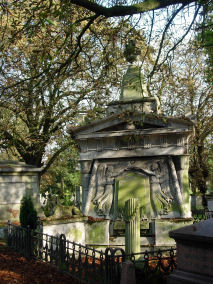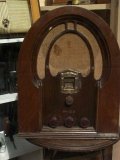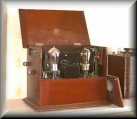Perspective (and fixed microphone)
| construction, width and depth of the sound picture |
| three-dimensional aspect of the sound picture |
|
Perspective is an important term in radio drama production and refers to the construction, width and depth of the sound picture in the fictional world of the sound play. "Perspective" is the three-dimensional aspect of the sound picture (or scene) constructed. Sound perspective creates a sense of spatial dimension through the positioning of sound sources. Sound perspective in film is the apparent spatial relationship between a given sound and the visual image. Perspective refers to the broadcast sound, the construction of fictional sound pictures, as a result of production construction. (This is rather than the way we perceive sound in the Lifeworld and in Soundscape - An environment of SOUND (or sonic environment) with emphasis on the way it is perceived and understood by the individual, or by a society.) |
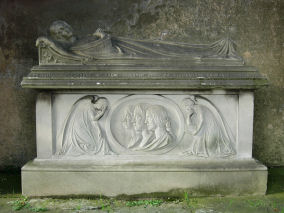
Perspective is a combination of:
| sound centre in the sound picture |
| fixed sound centre or moving sound centre (For fixed sound centre, see also Standard production (predominant style in realist radio plays)) |
| representation of the time-space-movement continuum of the Lifeworld |
| mode - realism ('mirror' of the Lifeworld) or towards non-realism and anti-realism (See Realism or naturalism - SLICE-OF-LIFE - VERISIMILITUDE - ('like-to-reality-truth') - 'window on the world') |
| acoustic (See Acoustic - the way sound behaves in a particular environment) |
| time-space-movement continuum of the Lifeworld |
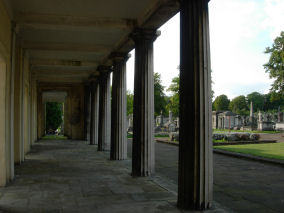
Focus (by analogy with film and the film lens):
Depth of field; shallow focus; deep focus (everything is in sharp focus)? Rack focus (lens refocuses)? Soft focus?
See Perspective explained by film shot analogy

Perspective and microphone placing
Perspective depends on microphone placement.
| A microphone placed close to a subject will record a sound in which the speaker's voice seems to be in the foreground and other sounds more in the background. |
| When the microphone is placed at a greater distance, the voice will be closer to the background sounds and may even be obscured by them. In a boomy, acoustically "alive" room, close miking makes a voice more intelligible by reducing the resonant effects of the space. |
| In order to reduce unwanted background effects, a microphone often has to be placed quite close. |
| Varying the distance from the microphone to the subject changes the sound perspective, giving the impression that we are closer to or farther from the subject. |
| Microphone placement is often coordinated in film with the camera shots to create a sound perspective that matches the apparent visual perspective. |

How do you place the characters in dialogue (in a radio play scene)?
A prime item in perspective is how closely the speakers are heard in relation to the sound centre.
This will be due to their microphone placing (blocking), that is, their distance from the microphone(s).
The simplest way to understand perspective is to discuss it initially as if there is one fixed microphone.
It will be later discussed in relation to more than one microphone, and to the "panning" from one mike to another.

|
Perspective explained by film shot analogy Key terms: close-up shot (CU) Also, perspective is explained by using the example of film shots - close-up, middle distance (mid shot), and far distance (long shot). (a) In close-up, the subject appears large in the frame, which can cut across his chest. There is also extreme close-up, on his face. Close medium shot is where the subject is cut below the waist. Medium close up is cutting the subject just above the waist. (CU = close up, CMS = close medium shot, MCU = medium close up) (b) In mid-shot, the frame cuts across the subject at the knees. Medium long shot is a tight full-length figure. (MS = medium shot, MLS = medium long shot) (c) In long shot, the subject is relatively small in the frame, relatively far away. (LS= long shot, VLS = very long shot) |
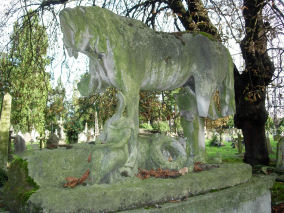
close-up to mid-shot
Most standard production is in close-up to mid-shot.
A test of this is the sound picture constructed within a room.
For example, how long it takes a character to enter in to the room through the door and then to be heard talking beside another character.

|
Measurements of distance in radio, play perspective Dimensions are established by the location of the scene, especially if it is an interior, such as a kitchen, livingroom, factory, office, bar, around a restaurant table. If outside, it could be a pavement, across a street, in a garden, or along a mountainside.
(a) Close-up to medium close-up (CU to MCU) (b) Mid-shot to medium long shot (MS to MLS) (c) Long shot to very long shot (LS to VLS) Radio being flexible, and with its images not visually fixed by contrast with the film visual track, in the visual frame, there can be a shift of POL progressively from sound picture 'shot' to 'shot'. See Filmic - styles of radio drama directing and post-production which creatively relate to film
|
Avoid the impression of 'stand-and-deliver' acting & dialogue
| As a radio drama director, you have to create the 'live-ness' of character dialogue. |
| DO NOT keep your actors in the same position in front of the microphones all through a dialogue scene. |
| REDRAFT THE SCRIPT if you need. Do not be afraid to do this! You must give opportunities to your actors to come alive. |
| Once or twice or more, direct your actors to move from position three (dialogue) to position two (intimate dialogue). This is a SHIFT from one position to another. It demands technical acting skill. It must fit with the dialogue situation - the intimate climax of a scene?, telling a secret?, wanting to move to an objective. |
| Get your actors to 'embody' the dialogue - to introduce physicality into the dialogue. This has to be organic - it has to realise what is in the script and it has to 'breathe', and open out the dialogue. |
| Don't be too fussy. All must serve the character-action-script. |
| ENTRANCES AND EXITS - I am overall against a scene beginning with an entrance and ending with an exit. (It's too slow.) But a character can arrive into the dialogue of two others (what I call the TWO PLUS ONE technique). |
| CHANGE a fixed-sound centre scene into a moving sound centre scene. (See SOUND CENTRE - FIXED SOUND CENTRE - the centre of the sound picture remains fixed in the same place + MOVING SOUND CENTRE - 'we go with') |
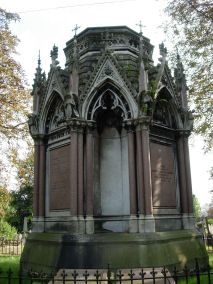
Perspective and panning microphone
This discussion of perspective is only within the main form of
standard production, with a "static mic". Perspective
must also be considered when "panning" the mic.
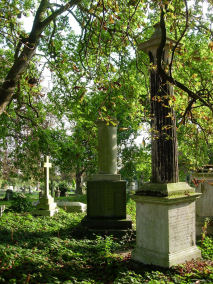
For class discussion:
Perspective and film
How can the perspective move from one "shot" to another?

CONTINUING THROUGH THIS SITE: sound centre and Point of listening = POL
|
|
|
|
|
